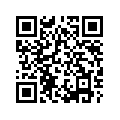| Computer Society Home | Computational Intelligence Society Home |
|
IEEE.org | |IEEE Xplore Digital Library | IEEE Standards Association | IEEE Spectrum Online | More IEEE Sites |
| Computer Society Home | Computational Intelligence Society Home |
|
IEEE.org | |IEEE Xplore Digital Library | IEEE Standards Association | IEEE Spectrum Online | More IEEE Sites |

|
Rochester Joint Chapter of the IEEE Computer and Computational Intelligence SocietiesRochester, New York |

|
|
Date: Monday, December 8, 2014 freeware that is comparable to MATLAB Computer Society announcements and venue information: https://ewh.ieee.org/r1/rochester/computer Cost: Free. Open to IEEE members and non-members. |

|
AbstractGenetic Algorithms (GAs) are among a growing body of problem solving techniques inspired by natural systems, biological, sociological, chemical, physical, etc. GAs are based on the evolutionary idea of survival of the fittest and are implemented as algorithmic problem solving by selective breeding. A GA uses a population of dozens or hundreds of proposed solutions to a problem and repeatedly creates new solutions (children) from pieces of the relatively better individuals (parents), injecting a small amount of error (mutation) into the new individuals. Surprisingly, this often works. These algorithms can often be very effective to find maxima of continuous functions in cases where calculus cannot easily be applied, and also to quickly find acceptable sub-optimal solutions to difficult (i.e., NP complete) combinatorial problems such as scheduling, bin packing, traveling salesperson, map coloring, etc. This second of two talks covers more interesting variations and applications. We give special attention to permutation-based problem solutions and how to perform crossovers on permutations. (The first of the two talks, scheduled for the previous week, gave an introduction to the basic algorithm along with variations and tuning parameters and surveyed some applications. In this portion, solutions to problems were represented by bit strings, a familiar object that is easy to create randomly, crossover (sexual reproduction) and mutate.) Speaker's BiographyPeter was a member of the Computer Science faculty at RIT for 25 years, concentrating on graduate education, CS Theory, Neural Networks, Pattern Recognition, and GAs . He continues to actively advise Graduate CS students, pursue research in Fibonacci Numbers, and march with the Pittsford Fire Department Band. |
| Rochester Chapter Home | Rochester Section Home | Privacy & Security | Terms & Conditions | Nondiscrimination Policy | |
|
© Copyright 2016 IEEE – All Rights Reserved. Use of this Web site signifies your agreement to the terms and conditions. |
|
|
If you would like to contact the
Rochester Joint Chapter of the IEEE Computer and Computational Intelligence Societies Webmaster,
use the email link on the
Officer's page for the Joint Computer Chapter
Webmaster.
(Modified: 9-October-2014 JC) |